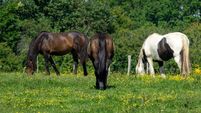Building a better future for Haiti
It was the first ever black republic. Christopher Columbus arrived on Haiti in 1492 to the dismay of many indigenous peoples, including Queen Anacaona who resisted the incursion of the Spanish and was executed in front of her people. Diseases such as smallpox decimated many Taino. If they refused to work in the gold mines they were either killed or sold into slavery.
Over the ensuing years of constant colonisation and occupation, the population of Haiti became a mix of escaped African slaves, children born to native women and European men and an important emerging class known as gens de coleur libre (free people of colour). The island became a haven for pirates and buccaneers.
In 1794, Toussaint Louverture, a former slave and leader in the slave revolt, which swept the island, achieved peace after many years of conflict. Louveture drove out both French and British invaders but was eventually captured and died in France of exposure and tuberculosis after Napoleon sent a force of 20,000 to retake the island and reintroduce slavery.
Independence was finally declared in 1804. after yellow fever and master strategist Jean-Jacque Dessalines killed off many of the French troops.
It was an extraordinary and turbulent beginning for any new nation. But it didn’t end there. The United States occupied the island from 1915 to 1934, built roads and an infrastructure in addition to establishing the National Guard who ran the country by violence and terror after the marines left.
Then there was the infamous Duvalier family Papa Doc, his son Bebe and their murderous Tontons Macoutes (Bogeymen), whose dictatorship flourished from 1957 to 1986. Throughout its troubled history, Haiti has fallen victim to unscrupulous politicians, would-be colonists and messianic leaders. And that’s without the fact that through all this, storms, hurricanes, tornados and earthquakes have regularly pummelled the island.
The Haiti earthquake of 2010 left up to 316,000 people dead and 1.6 million homeless. Then, in October 2010, a cholera outbreak was detected near the banks of the Meyer River.
Last week, the Haitian Prime Minister Laurent Lemothe said that 57% of Haiti’s population still lives in extreme poverty. He announced new programmes designed to fight poverty and hunger while participating in agricultural recovery through the purchase of local food. This must be welcome new for Haiti’s farmers.
Haiti is the poorest country in the Western Hemisphere. Nearly 600,000 people still live in camps with limited basic facilities and half a million children under 18 have never been to school. And yet Haiti, with all its challenges, is no longer regarded as a donor funding priority.
Haven is an Irish non-government, non-political and non-religious organisation, who work exclusively in Haiti. Leslie Buckley and his wife Carmel founded it in 2008. Haven have recently announced their 2013 Volunteer Programme and the opportunity to work with communities on Haiti’s beautiful Ile a Vache (Island of the Cow) who were devastated by Hurricane Sandy last October.
I spoke with Haven’s media liaison officer, Antonia King about this year’s programme.
*I believe that this year Haven have expanded their brief?
>>“Yes. We have three core development areas — water and sanitation, shelter and training and education. And the departure date for volunteers travelling from Ireland is May 24, returning to Dublin on Jun 2. We ask our volunteers to raise €4,500 each, which we know in these difficult times is a big ask. But the majority of that money goes to community development and for meals and transport to and from Haiti.”
*How many Irish volunteers have participated in Haven’s ‘Build It Week for’ new homes so far?
>>“Over 1,400 Irish people of all ages and from all walks of life have participated. And the difference they have made is enormous. Training is a key element of our programmes. It’s critical to our success and we’ve trained over 3,000 Haitians so far in areas such as construction, agriculture, water and sanitation, crucial to fight the spread of cholera. Schools, playgrounds and community buildings are all key elements of our community building projects.”
*What was your own first trip to Haiti like?
>>“Well, the first time I went there was last November and as we were driving on the bus from the airport what I saw made me very upset. It was a mixture of real poverty and what seemed like everyone trying to rebuild some sort of shelter at the same time. But then I found out just how brilliant and resourceful the Haitian people are. They have a wicked sense of humour too, and I found them very like the Irish, friendly and welcoming and well used to surviving hardship.”
*What will this year’s volunteers be working on?
>>“They’ll be based on Ile-a-Vache that has a population of about fifteen thousand. It’s a lush, beautiful island, which was decimated when Hurricane Sandy tore through the region last November. The communities there need help rebuilding homes, schools, playgrounds and community centres. And of course, agriculture and fishing are hugely important in areas like this so that people can feed themselves and earn some sort of income. We help them to restructure these important industries We upskill, train and employ Haitian people throughout the year and we have expatriate and local staff members based across Haiti on a full time basis.”
*What will your volunteers gain from this experience?
>>“Well, first and foremost they will get to meet and help some remarkable people who never give up and who are creative, resilient and have a great sense of humour. I think that there is a very special bond between the Irish and the Haitians. And by volunteering for Haiti, they will have an opportunity to visit a beautiful and unique country.”









